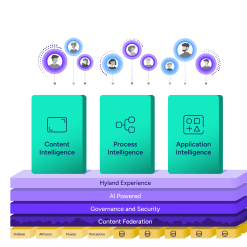Ensure secure information access
Data security breaches are a major area of concern for chief security officers and chief information officers. To ensure remote teams remain secure, you should focus on people, technology and processes (according to McKinsey & Company’s “Cybersecurity tactics for the coronavirus pandemic.”)
Take a people-first security approach
Phishing, smishing, vishing, baiting — the list of socially engineered cyberattack tactics is long and frightening, primarily because most prey on human error. These threat campaigns target vulnerable systems and people, and with many people working remotely for the first time, vulnerabilities are at an all-time high. Security teams need to inform employees of the enhanced predation during a crisis, as well as reiterate any previous training to eliminate exploitation.
It’s beneficial for all to create an official remote working policy and do continual training on it. It should include policies around data security expectations, password protection and work expectations.
Assure employee technology is secure
Starting with secure home Wi-Fi, what may seem simple can be a large-scale problem. In an office setting, IT can control Wi-Fi settings, but employees’ home connections may not have strong protections in place, leaving organizational networks vulnerable to hacking. Create a plan for getting employees the equipment and assistance they need to keep data safe.
Utilize cloud security solutions with cloud delivery so employees have access to the information they need to do their jobs, and the information itself is protected. Leading cloud solutions provide secure data centers, encrypted in-transit connections, built-in redundancy, data replication, disaster recovery and even ongoing penetration and vulnerability testing.
When faced with a new work-from-home environment, employees may lean on unsanctioned shadow IT solutions to get around productivity obstacles. IT departments need to be ready to provide vetting, assistance, protection and sanctioned alternative solutions for employees looking to such workarounds.
While initiating multifactor authentication may be cumbersome on the front end, the security benefits do pay off. McKinsey and Company recommends a phased rollout that prioritizes users with elevated privileges and those who work with critical systems.
For employees who have never worked off site, logging into VPNs or authenticating necessary credentials can feel overwhelming and may be beyond their digital comfort zone. Consider adding capacity to the IT help desk so newly remote workers can get the help and support they need, when they need it.
Maintain a strong corporate culture
The values of an organization help define the type of work performed, and how it gets done. With employees remotely connected, it can be harder for teams to feel the strength of a company culture. To keep the company values visible and actionable, organizations need to stay committed to a delivering a positive employee experience that engages and recognizes valued work.














